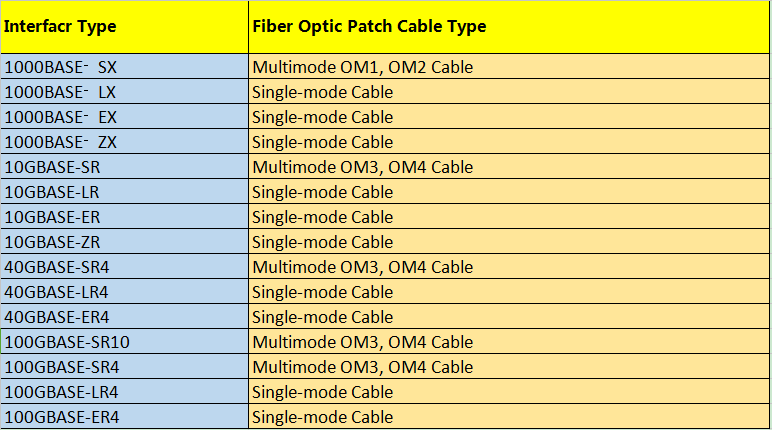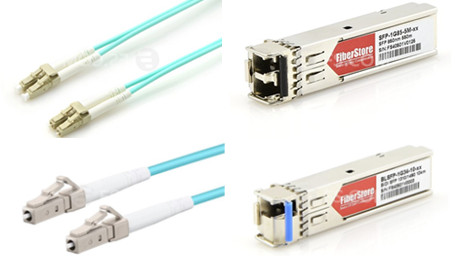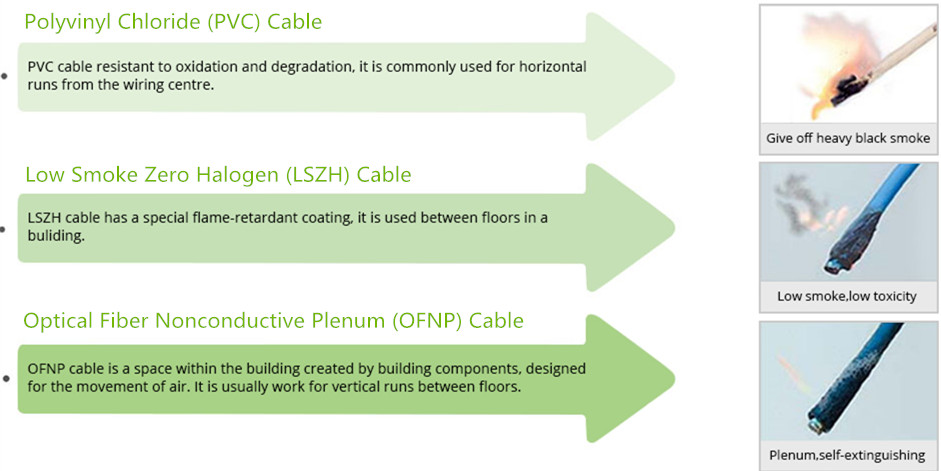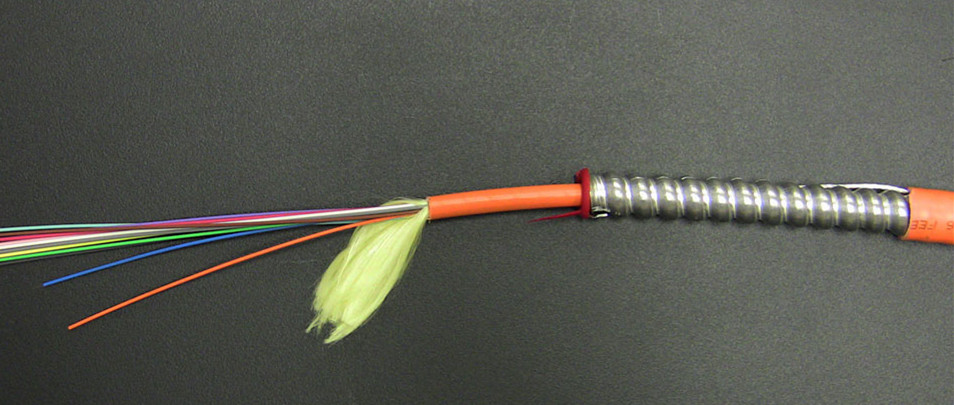June 24, 2016
There are various fiber optic patch cables for different applications. Fiber optic jumper cables are available in OS1, OS2 single-mode types and OM1, OM2, OM3, OM4 multimode types. Fiber optic jumper cables are terminated on both ends with a high performance hybrid or single type fiber optic connector, such as SC, ST, FC, LC, MTRJ, or E2000 connector in simplex or duplex. How to choose right fiber optic patch cables for your networks? Here are 6 factors that you need to take into consideration.
A fiber optic patch cable is terminated on both ends with a fiber optic connector, such as LC connector, SC connector, ST connector, FC connector, or MPO/MTP connector. Different connectors are used to plug into different devices. If ports of devices in the both ends are the same, we can use fiber optic patch cables with the same type of connectors on both ends, such as LC LC cables, SC SC fiber patch cord, ST ST fiber patch cable, or MPO-MPO patch cables. If you want to connect different ports type devices, fiber optic patch cables with different types of connectors on both ends, like LC SC fiber patch cable, LC to ST fiber patch cable, or SC to ST fiber cable, may suit you.

Other than choosing the right connector type, you also need to choose the right connector polish type, whether the same polish type of the same connector type or different polish types of different connector types on both ends, such as SC APC fiber patch cord, SC/APC to LC patch cable. The loss of APC connectors is lower than UPC connectors. Usually, the optical performance of APC connectors is better than UPC connectors. APC connectors are widely used in applications such as FTTx, passive optical network (PON) and wavelength-division multiplexing (WDM) that are more sensitive to return loss. But APC connector is usually more expensive than UPC connector. With those applications that call for high precision optical fiber signaling, APC should be the first consideration, but less sensitive digital systems will perform equally well using UPC.
Fiber optic patch cable has two propagation modes: multi-mode and single-mode. Single-mode fiber patch cord uses 9/125um glass fiber. It is designed for the transmission of a single ray or mode of light as a carrier and is used for long-distance signal transmission. Multimode fiber patch cord usually uses 50/125um or 62.5/125um glass fiber. It can carry multiple light rays or modes, each at a slightly different reflection angle within the optical fiber core. Multimode fiber optic patch cables is used for relatively short distances because the modes tend to disperse over longer lengths. Typical single-mode fiber optic patch cable used yellow fiber cable and multi mode fiber optic patch cable used orange or aqua fiber cable.

Do you need simplex or duplex fiber optic patch cords? There is only one single strand of glass or plastic fiber in a simplex fiber optic patch cord. It is often used where only a single transmit and/or receive line is required between devices. A simplex fiber optic patch cord has only one fiber optic connector at each end, often used for Bidirectional (BiDi) fiber optic transceivers. A duplex fiber patch cord consists of two strands of glass or plastic fiber which are typically found in a tight-buffered and jacketed "zipcord" construction format. The duplex fiber is most often used for duplex communication between devices where a simultaneous and separate transmit and receive are required. Duplex fiber patch cords are used for common transceivers. Simplex and duplex fiber patch cords both are available in single mode and multi-mode.

Usually, there are three types of cable jacket: Polyvinyl Chloride (PVC), Low Smoke Zero Halogen (LSZH) and Optical Fiber Nonconductive Plenum (OFNP). You can see there features in figure below and choose the right one for your network.

Besides those three cable jacket types above, there is another common cable, armored cable. The double tubing and steel sleeve construction make these patch cables completely light tight, even when they are bent. These cables can withstand high crushing pressures, which makes them suitable for running along floors and other areas where they may be stepped on. The tubing also provides excellent cutting resistance, abrasion resistance, and high tensile strength.

Fiber optic jumper cables are made in different lengths, usually from 0.5m to 50m. You can choose an appropriate cable length according to the distance between the devices you want to connect.
When choosing a right fiber optic patch cord, you need to consider all these six factors carefully. Single-mode or multimode, simplex or duplex, APC or UPC connector polish type, which one is right for your networks? Which kind of fiber optic connector do you need, SC, ST, FC, LC, MTRJ, or E2000 connector? By figuring out what you need exactly and consider all these six factors, you can make appropriate choices for your applications.
Posted by: jowang at
07:00 AM
| No Comments
| Add Comment
Post contains 835 words, total size 7 kb.
35 queries taking 0.0166 seconds, 70 records returned.
Powered by Minx 1.1.6c-pink.









